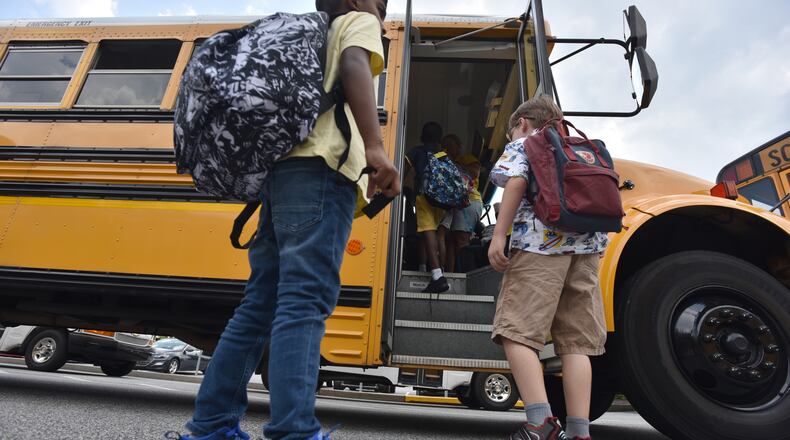With Georgia’s economy thawing from a COVID-19 freeze, Gov. Brian Kemp had good news last week for schools and other government entities that are thirsty for state revenues: The money will flow a little better than he thought.
The bad news, though, is that the state economy will still stumble through the next fiscal year, with revenues falling 11%. Instead of the $3.3 billion in cuts that Kemp called for when he expected a 14% decline, the shortfall will be about $2.6 billion.
A chunk of that will likely come out of education, one of largest parts of the state budget. The public could see cuts in the form of missed school as teachers and staff take unpaid days off, known as furloughs. These may be more likely in struggling, rural areas, where local economies remain sluggish a decade after the Great Recession and property tax revenues are too small to supplement cuts to state funding. Even well-funded districts will have to pare back spending if they don't want to drain their cash reserves, though. Atlanta Public Schools, for instance, has a tentative budget that avoids furloughs yet cuts money for things like new books.
“The affluent districts are not going to be as pinched, but they’re going to be affected, too,” said Bronwyn Ragan-Martin, president of the Georgia School Superintendents Association.
On average, about half of the budgets of Georgia's 180 school districts come from the state, with the other half from local taxes plus a dash of federal dollars. In some places, though, the Gold Dome pays closer to 70% of schooling costs.
The fiscal shortfall is driven by the coronavirus crisis. As part of its CARES Act emergency funding, the federal government sent Georgia nearly half a billion dollars to help. So far the Georgia Department of Education and the state school board are releasing $411.5 million to school districts, keeping the remaining 10% for administrative costs and a rainy day fund.
The money helps, but doesn't make up for the likely state cuts. Before Kemp's announcement Wednesday, Fulton County Schools' allocation was expected to equal about a third of the 14% state cut. DeKalb County's federal aid was closer to half that previously projected state cut. In Taliaferro County, where Allen Fort runs a one-building school district with 180 students, the federal money totals $118,000. That is a little over half of what he expects an 11% state cut to cost his district.
The federal money helps “tremendously,” Fort said, but his local economy is faring worse than the state’s, so he can’t call on local taxpayers to fill the void.
His district has about a million dollars in the bank, but it took at least a decade to build that up and he doesn’t want to blow through it too quickly, since no one knows how long the economic downturn will last. He calculates that furloughing teachers would save $6,000 a day, so he would have to shorten school by about three weeks to balance his budget that way.
On top of all that, if he opens his buildings in the fall, he figures he will have to buy a thousand gallons of hand sanitizer, not to mention masks and disinfectant for the routine cleansing that is required under new public safety guidelines.
“So how are we supposed to make it up?” Fort said of the cuts. “We can’t print money.”
Many districts may also see higher costs for busing if they elect to school students in shifts to reduce the head count and increase social distancing. Technology expenses for online learning are also expected to rise, for an unfortunate collision of costs and cuts.
Some school advocates are likening the situation to the budgetary crisis of a decade ago, but it is not that bad yet.
Those cuts came atop nearly a decade of state “austerity” budgets that slashed funding. So schools were already weakened by the time they hobbled into that economic downturn, said Angela Palm, a longtime state lobbyist for the Georgia School Board Association. Then the cuts kept coming year after year, and the first was larger than what is expected now.
“It’s going to be challenging,” Palm said, “but it’s not as bad as the Great Recession.”
About the Author
Keep Reading
The Latest
Featured



